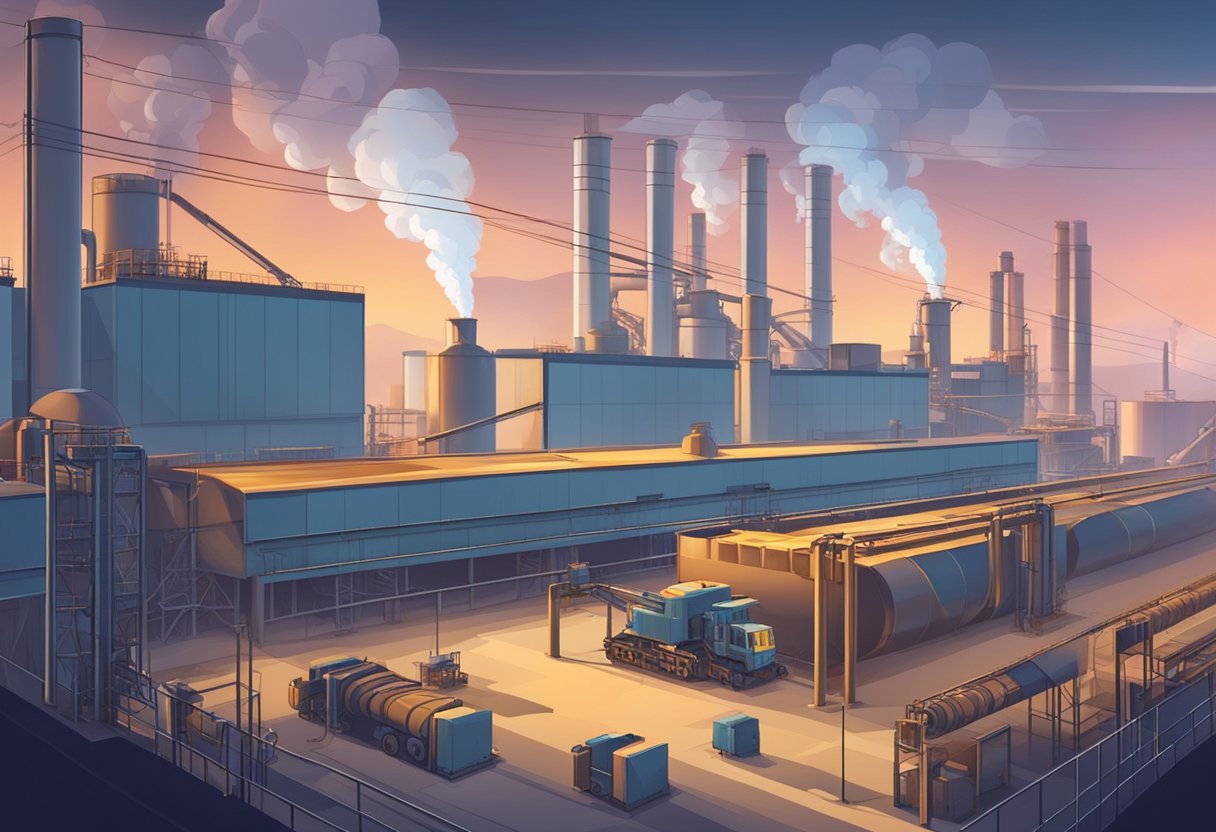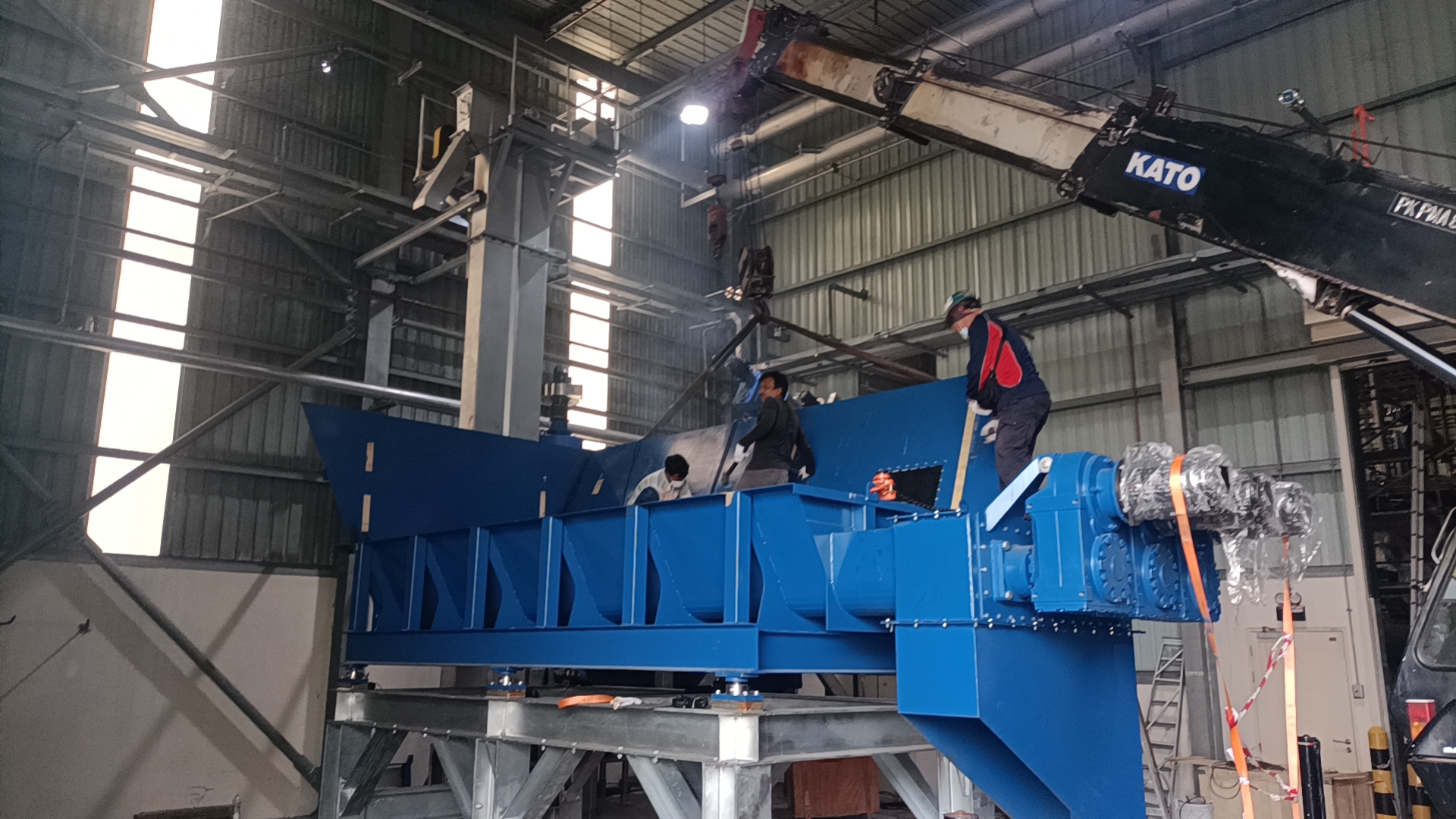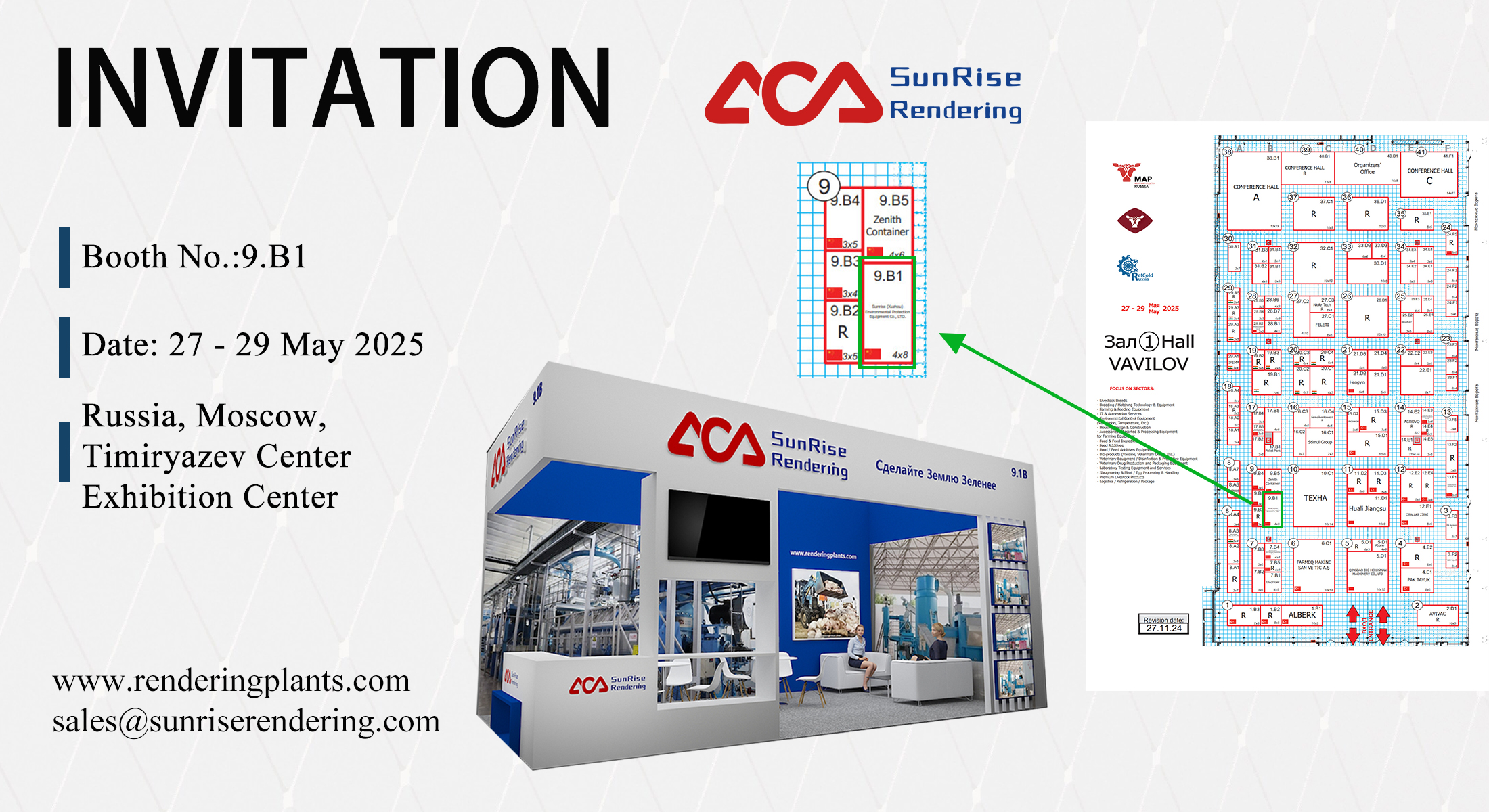
Rendering Industry: Understanding the Process and Impact on the Environment
Rendering Industry: Understanding the Process and Impact on the Environment
The rendering industry is an essential part of the food production chain, yet many people are unaware of its existence. This industry is responsible for processing animal by-products, including bones, fat, and meat trimmings, into valuable products. These products are used in a wide range of applications, including animal feed, pet food, and biodiesel production.

The rendering process involves heating the by-products to high temperatures, which breaks down the proteins and fats. The resulting material is then separated into different products, including protein meals, fats, and greases. These products are then sold to various industries for use in their products. The rendering industry plays a critical role in the food production chain by ensuring that animal by-products are safely and efficiently processed, reducing waste and providing valuable resources for other industries.
History of Rendering Industry

Rendering industry has a long and fascinating history that dates back to ancient times. The practice of rendering animal by-products into useful materials has been around for thousands of years. The ancient Egyptians, Greeks, and Romans all used animal by-products for various purposes, such as making candles, soap, and fertilizer.
During the Middle Ages, rendering became an important industry in Europe. Tallow, which is the rendered fat of animals, was used for lighting, and it became a valuable commodity. The industry continued to grow and evolve over the centuries, and by the 19th century, it had become a major industry in the United States.
In the early days of the rendering industry, the process was done on a small scale, with individual farmers rendering the by-products of their own animals. However, as the industry grew, rendering plants began to spring up across the country. These plants were able to process large volumes of animal by-products, and they became an important source of raw materials for a variety of industries.
Today, the rendering industry continues to play an important role in the global economy. It provides valuable materials for a variety of industries, including agriculture, food production, and energy. The industry has also made significant advances in technology, making the rendering process more efficient and environmentally friendly.
Overall, the history of the rendering industry is a testament to the ingenuity and resourcefulness of human beings. By finding new and innovative ways to use animal by-products, the industry has helped to improve the lives of people around the world.
Rendering Process

Raw Material Collection
The rendering process begins with the collection of raw materials, which can include animal carcasses, fat, bones, and other by-products from meat processing plants. These materials are then transported to the rendering facility, where they undergo a series of steps to transform them into useful products.
Pre-Processing
Once the raw materials arrive at the rendering facility, they undergo a pre-processing stage. During this stage, the materials are sorted and any unwanted materials, such as hair, feathers, and hooves, are removed. The materials are then ground into small pieces to prepare them for the next stage of the rendering process.
Thermal Rendering
The next stage of the rendering process is thermal rendering. This involves heating the ground materials in large, closed vessels known as rendering cookers. The heat and pressure cause the fat to separate from the protein and other solids. The resulting liquid fat, known as tallow, is then separated from the solids, which are known as meat and bone meal.
Refining Process
After the thermal rendering process, the tallow and meat and bone meal undergo a refining process. During this stage, any impurities are removed from the tallow and the meat and bone meal is ground into a fine powder. The tallow and meat and bone meal are then packaged and sold for use in a variety of industries, including animal feed, pet food, and biodiesel production.
Quality Control
Throughout the rendering process, quality control measures are in place to ensure that the final products meet industry standards. Samples of the raw materials, tallow, and meat and bone meal are taken and analyzed for purity and quality. Any materials that do not meet the required standards are discarded.
Overall, the rendering process is a crucial part of the meat processing industry, providing a valuable source of protein and fat for a variety of industries. By utilizing the by-products of meat processing, the rendering industry helps to reduce waste and promote sustainability.
Types of Rendering

Rendering is the process of converting animal by-products into various products, including fats, proteins, and minerals. There are two main types of rendering: edible and inedible rendering.
Edible Rendering
Edible rendering is the process of converting animal by-products into food products for human consumption. This type of rendering is highly regulated and must meet strict guidelines to ensure food safety. The most common products of edible rendering are meat and bone meal, poultry meal, and fish meal. These products are used in animal feed and pet food.
Inedible Rendering
Inedible rendering is the process of converting animal by-products into non-food products. This type of rendering is less regulated than edible rendering. The most common products of inedible rendering are tallow, grease, and protein meals. These products are used in a variety of industries, including soap and detergent manufacturing, biodiesel production, and fertilizer manufacturing.
Inedible rendering can be further divided into two categories: low-temperature rendering and high-temperature rendering. Low-temperature rendering is a slow, gentle process that produces high-quality products. High-temperature rendering is a faster process that produces lower-quality products.
Overall, rendering is an important industry that plays a crucial role in the efficient and sustainable use of animal by-products. By converting these by-products into useful products, rendering helps to reduce waste and minimize environmental impact.
Applications of Rendered Products
Rendered products are utilized in a wide range of applications, primarily in the agricultural and industrial sectors. The following subsections provide a brief overview of some of the most common uses of rendered products.
Animal Feed
One of the primary uses of rendered products is as animal feed. Rendered fats and proteins are commonly used in the production of pet food, aquaculture feed, and livestock feed. These products are high in energy and provide essential nutrients to animals, making them an ideal ingredient in animal feed.
Biofuel
Rendered products are also used in the production of biofuels. The fats and oils extracted from animal by-products can be converted into biodiesel, which is a renewable and sustainable alternative to traditional fossil fuels. This helps to reduce greenhouse gas emissions and reliance on non-renewable energy sources.
Fertilizers
Rendered products can also be used as fertilizers. By-products such as bone meal and blood meal are rich in nutrients such as nitrogen, phosphorus, and potassium, which are essential for plant growth. These products are commonly used in organic farming and gardening as a natural and sustainable fertilizer.
Industrial Uses
Rendered products are also utilized in various industrial applications. For example, tallow, a rendered fat, is used in the production of soaps, candles, and lubricants. Additionally, the collagen extracted from animal by-products is used in the production of gelatin, which is used in the food industry as a gelling agent.
In conclusion, rendered products have a wide range of applications in various industries, from animal feed to industrial uses. These products are sustainable, renewable, and provide essential nutrients and energy to animals and plants.
Environmental Impact
Emission Control
The rendering industry is known to produce emissions that can negatively impact the environment. However, many rendering plants have implemented emission control technologies to reduce their impact. Some of the most common technologies used include scrubbers, filters, and thermal oxidizers. These technologies help to capture and remove harmful pollutants from the air before they are released into the environment.
Waste Management
Rendering plants generate a significant amount of waste, including animal by-products and wastewater. Proper waste management is crucial to prevent environmental pollution and ensure the safety of nearby communities. Many rendering plants have implemented waste management practices such as composting, anaerobic digestion, and land application to manage their waste.
Sustainability Practices
The rendering industry has made significant strides in implementing sustainable practices. Many rendering plants have implemented energy-efficient technologies, such as cogeneration systems, to reduce their energy consumption. Additionally, some rendering plants have implemented recycling programs to reduce the amount of waste they generate.
Overall, the rendering industry has made significant progress in reducing its environmental impact through the implementation of emission control technologies, waste management practices, and sustainability initiatives. However, there is still room for improvement, and the industry must continue to strive towards more sustainable practices to protect the environment and nearby communities.
Regulations and Compliance
The rendering industry is subject to various regulations and compliance requirements to ensure that it operates in a safe and environmentally responsible manner.
Health and Safety Standards
The rendering industry is required to comply with health and safety standards to ensure the safety of its workers and the public. This includes providing appropriate personal protective equipment, implementing safety procedures, and ensuring that equipment is properly maintained.
Environmental Regulations
The rendering industry is subject to environmental regulations to ensure that it operates in an environmentally responsible manner. This includes regulations related to air and water quality, waste management, and emissions. The industry is required to implement measures to minimize its environmental impact and comply with all applicable regulations.
Industry Certifications
The rendering industry is subject to various industry certifications to ensure that it operates in a responsible and sustainable manner. These certifications may include ISO 14001, which focuses on environmental management, and OHSAS 18001, which focuses on occupational health and safety management. Obtaining these certifications demonstrates a commitment to responsible and sustainable practices.
Overall, the rendering industry is subject to various regulations and compliance requirements to ensure that it operates in a safe and environmentally responsible manner. By complying with these requirements and obtaining industry certifications, the industry can demonstrate its commitment to responsible and sustainable practices.
Technological Advancements
Automation in Rendering
The rendering industry has undergone significant changes in recent years, with the adoption of automation being one of the most significant. Automation has enabled rendering companies to improve their efficiency, reduce costs, and increase their output. This has been made possible through the use of advanced technologies such as artificial intelligence (AI) and machine learning (ML).
One of the most significant benefits of automation in rendering is the reduction of manual labor. This has helped to reduce the risk of injury to workers and has also improved the overall quality of the rendering process. Automation has also enabled rendering companies to increase their output, as machines can work around the clock without the need for breaks.
Innovative Processing Techniques
In addition to automation, rendering companies are also adopting innovative processing techniques to improve the quality of their output. One such technique is the use of high-pressure processing (HPP), which involves subjecting the raw materials to high pressure to break down the cell walls and release the nutrients.
Another innovative technique is the use of enzymes to break down the raw materials. This has been found to be particularly effective in breaking down proteins and fats, resulting in a higher quality end product.
Overall, technological advancements have had a significant impact on the rendering industry, improving efficiency, reducing costs, and increasing the quality of the output. As the industry continues to evolve, it is likely that we will see even more innovative technologies being adopted.
Market Dynamics
Supply and Demand
The rendering industry is heavily dependent on the supply of raw materials, primarily animal by-products, and the demand for its end products, such as animal feed, pet food, and biodiesel. The supply of raw materials is influenced by factors such as the size of the livestock industry, animal disease outbreaks, and government regulations. Meanwhile, the demand for rendered products is driven by the growth of the animal feed and pet food industries, as well as the increasing demand for renewable energy.
Economic Factors
The rendering industry is also affected by various economic factors, such as inflation, interest rates, and exchange rates. Inflation can increase the cost of production, while changes in interest rates can affect the cost of borrowing and investment decisions. Meanwhile, fluctuations in exchange rates can impact the competitiveness of rendered products in the global market.
Global Trade
Global trade plays a significant role in the rendering industry, as many of its products are exported to various countries. The industry is affected by factors such as trade policies, tariffs, and trade agreements. For instance, the ongoing trade tensions between major economies can result in higher tariffs and trade barriers, which can negatively impact the industry’s exports. On the other hand, trade agreements can provide opportunities for the industry to expand its market reach.
In summary, the rendering industry is influenced by various market dynamics, including the supply and demand of raw materials, economic factors, and global trade. It is important for industry players to stay informed of these factors to make informed business decisions and remain competitive in the market.



